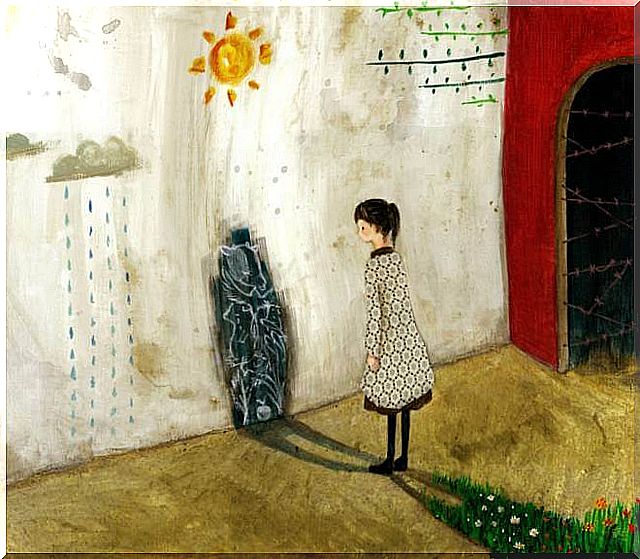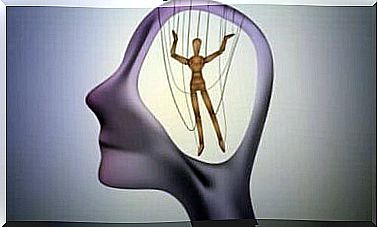First White Then Black: Emotional Instability

Sometimes it is normal to be more cheerful or animated than usual; It is also normal to feel anger when things don’t go our way.
Ultimately, emotions have a very specific purpose, which is to make us achieve our goals, allow us to communicate and make us survive.
The problem arises when these emotions stop adapting to the situation and the person who feels them lets himself be excessively carried away by them, adopting behaviors that do nothing but interfere with their effectiveness and adaptation. Instead of solving problems, therefore, they create them.
Emotional instability
In psychology this behavior is called emotional instability. Emotional instability is a personality trait and sufferers are constantly changing moods with no apparent cause or logic.
The person in question does not tolerate frustration, that is, if something does not go as he would like, he carries out a series of very intense and extreme emotional and behavioral responses such as anger, aggression towards himself or others, taking drugs , promiscuity …
They are people with low self-esteem, with dichotomous thinking (either white or black), communication problems and few resources to deal with the difficult situations in life.
They are also very impulsive and visceral people who do not think about the consequences before acting and then find themselves with more problems than before that, even in this case, they know how to manage.

On the other hand, they fall in love easily, they idealize people, which leads them to be emotionally very dependent, changing partners relatively frequently, as it is difficult for them to be alone. They claim to always have a feeling of inner emptiness.
All this causes them many problems in the social, work, family …
Emotional instability has a cure although it is essential that the unstable person be motivated to change and improve.
Unstable people do not change overnight, as they have internalized and automated the behaviors we have explained; however, with exercise and desire they can shape their personality a lot.
Some techniques used in therapy to help overcome emotional instability are:
Cool the mind
Going out for a walk with the dog, riding a bicycle, listening to music, watching a movie alone allows us to distract ourselves and clear our minds so that our anger or malaise level reduces considerably after a while. weather.
Problem solving
Detaching yourself from the situation and calming down is very good, it allows you to see things from another perspective, but it is not enough. The problematic situation must be addressed.
The problem solving technique is very easy to do and can be of great help. It is a question of generating many alternative solutions that do not include self-aggression or the aggression of others, much less maladaptive behaviors.
It is good to understand and be clear that none are 100% beneficial, because they all have pros and cons. After thinking about all the possible alternatives, it is good to evaluate each of them carefully.
Therefore, we choose only one solution, the one that has the most advantages and fewer drawbacks, and we apply it.
By choosing it, we create a plan to address the inconveniences that may arise from it so as not to be unprepared and react badly to the frustrations that may arise. The most important thing is to know how to make a decision and not postpone it, accepting that it may disagree with our plans.
Socratic dialogue with ourselves
Socratic dialogue is a technique that consists in questioning one’s way of thinking. that in emotionally unstable people it is usually wrong, causing them a high degree of discomfort.
To carry out this technique, we must first identify the situation or problem that causes us intense emotions and discomfort.
Once identified, let’s ask ourselves what we think about it. Typical thoughts of these people are: “If she hasn’t called me, she has certainly forgotten about me, she doesn’t love me”.
After identifying these harmful thoughts, we begin to question them. It is very helpful to write our questions and answers in a notebook.
An example of such a technique could be: What makes me believe that she / he doesn’t love me? What other alternatives could there be besides what I think? Am I coming to hasty conclusions?
When people ask these questions and answer them based on the facts, their emotions change completely, becoming more adaptive and calm.
Assertiveness training
These people lose the reason, which perhaps they have, because of their behavior and their way of saying things. Assertiveness training becomes necessary which will help them a lot with their self-esteem and relaxation problems.

One of the techniques of assertiveness is to come to some agreements.
This technique is used when the person sees his rights violated or is frustrated with something and needs to express his discomfort in an appropriate way.
The following steps are followed:
-First of all, the other is valued as a person and puts himself in his place: “ I understand that it was not your intention” .
-We express, therefore, the true cause of our malaise, but without judging the person since people make mistakes and it is necessary to differentiate people from their behavior; “I was upset because, even though I know you acted like this without wanting to…”.
After having expressed our discomfort, we propose a solution so that it does not happen again taking into account the proposals of the other or his opinions; in this way, we negotiate and come to an agreement. There is no need to shout, argue or insult … this would cause more problems and we would never get to the solution.
Simple, but difficult. Practice plays a very important role if you want to get out of this emotional prison you are in. Allow yourself to be free and let emotions not control your life.









